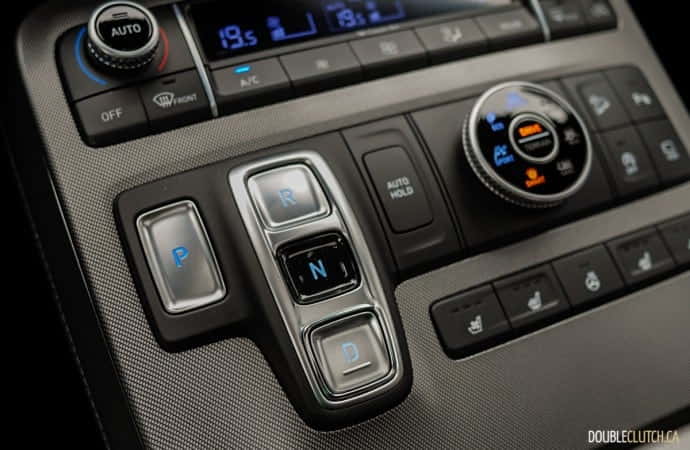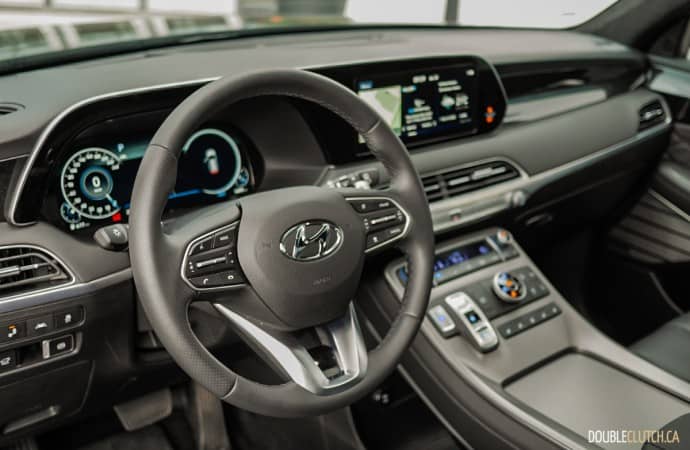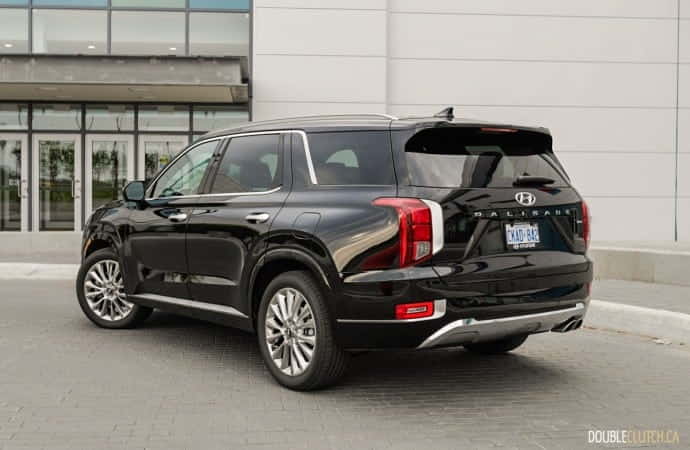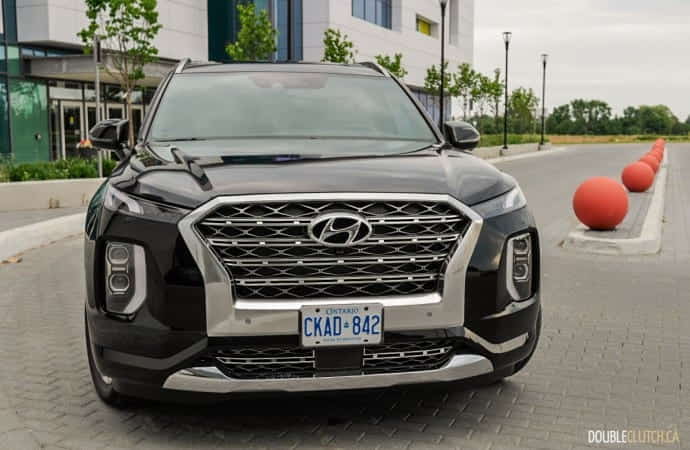Over the past decade, Hyundai has caught up to all other mainstream brands with perceived value and quality. They do this by shifting their focus away from making the cheapest cars, instead emphasizing on build quality and designing practical cars that resonate with the general public. 2019 is an important year for Hyundai and Kia, as they launch their premium three-row SUVs, the Palisade and the Kia Telluride, to a hungry market soaking up every SUV that automakers can offer.

We recently reviewed the Kia Telluride (reviewed here), and it had set the bar pretty high. This week, we were offered the opportunity to put its sister, the 2020 Hyundai Palisade Ultimate, to the test. The Palisade instantly sparked some debate amongst our team as to which of the new twins looks better. Personally, I prefer the way the Palisade looks; its sleek looking split LED headlights, oversized front grille, brushed chrome, and other fine details such as the illuminated silver accent on the tailgate. While we could not come to a consensus conclusion, we do agree that both the Telluride and the Palisade are great looking SUVs that garner attention and they both have a curb appeal that is unlike most mainstream SUVs from Japan.
The Palisade is powered by a 3.8-litre V6 engine that produces 291 horsepower and 262 lb-ft. of torque. Power delivery is linear and silky smooth, and we appreciate the quiet engine operation with very little unwanted vibration transmitted to the cabin. The eight-speed automatic transmission brings power to all four wheels seamlessly, even though we are not fans of the push button shifter and its shift-by-wire system for its minor delay in response.

The Palisade’s HTRAC all-wheel-drive system allows drivers to select various terrains (Snow/Mud/Sand) using the drive mode selector dial on the centre console, and would automatically adjust the traction distribution to help the driver’s navigation of the situation. The Palisade also has four adjustable driving modes (Comfort/Eco/Sport/Smart), with Sport mode being our preferred method of driving all week for the best throttle and transmission response. Steering response is considered middle of the road in its segment, which is good enough for the majority of buyers looking for one of these.
In terms of fuel efficiency, Hyundai estimates that the Palisade will achieve 11.9L/100km city, and 8.8L/100km highway, for a combined 10.5L/100km. That figure is slightly better than the 2019 Honda Pilot (reviewed here), another three-row SUV that with a non-turbocharged engine, and we observed a similar real world fuel economy of 11.3L/100km in our mixed commute. The Palisade does not require premium grade gasoline, and that alone could tip the scale for those who want a premium vehicle without paying extra for gasoline.

The Palisade’s interior design is simple and modern. The dashboard features a two-tier design, with the top being a piano black panel that houses the instrument cluster and the infotainment screen. The integrated design of the infotainment screen looks sophisticated and the row of metallic shortcut keys underneath looks high quality as well. We like that all of the control buttons are clearly labeled and well within reach, and the materials all around the cabin feel premium.
The perforated Nappa leather seats are supportive for long trips, and our tester features captain’s chairs in the second row that enhance comfort and accessibility. The Ultimate, as well as its Telluride SX Limited sibling, comes standard with first and second row heated and ventilated seats. The cooled seats in the second row are a truly rare feature for SUVs of any class. Head and leg room is excellent in the first two rows, and the third-row is on par with most mid-size seven passenger SUVs, best reserved for children or shorter trips. The third row can be folded with a touch of a button from the rear cargo area, to open up its cargo capacity from 509-litres to a very useable 1,297-litres.

Hyundai’s infotainment system is one of the more intuitive systems in the market today. The touchscreen is responsive and accurate, and it has a simple layout that allows for its functions to be reachable within a touch or two. Android Auto and Apple CarPlay connectivity is standard across all trims, and there are total of seven 2.1-amp USB outlets to keep your devices going. The Palisade comes equipped with double-pane windows that isolate most of the noise from the outside world and lets its passengers enjoy the 630-watt Harman Kardon 12-speaker surround sound system in a quiet environment. Luxury and Ultimate trim levels are also equipped with an in-car intercom system called Driver Talk to assist its occupants communicate.
The Palisade Ultimate comes with a full suite of safety features to keep its drivers alert and its occupants safe. These features include Adaptive Cruise Control with stop-and-go capability, Forward Collision Avoidance Assist, Pedestrian Detection, Lane Keeping Assist, Driver Attention Warning, Blind-Spot Collision Avoidance Assist, Rear Cross-Traffic Collision-Avoidance Assist, and Highway Driving Assist systems. Upper trims are built-in with a Blind-View Monitor (BVM) system, which works similar to Honda’s LaneWatch technology, but instead of displaying the video image on the main infotainment screen, it displays its blind-spot video feeds on the corresponding side of its digital cluster.

Pricing of the 2019 Palisade starts at $38,499, and the top-of-line Ultimate starts at $53,999, with no options available. The only additional cost was an extra $200 for the paint job for an as-tested total of $54,199. Pricing is very competitive with many of the 7-passenger SUV in the market, such as the Telluride, the Honda Pilot, and the Volkswagen Atlas (reviewed here). Those deciding between the Palisade and Telluride can basically pick the styling they prefer, or even simpler, choose one based on the shifter they want (button – Palisade / traditional – Telluride). These are the new class leaders in the competitive three-row SUV segment.
With the all-new Palisade, Hyundai adds another winner to its excellent line up of models. The Veloster N (reviewed here) has already been making headlines for its assault on the hot hatches, and the Palisade is surely going to keep the Korean brand on the front page longer. Hyundai’s luxury arm, Genesis Motors, does not currently have a SUV in its lineup, but the Palisade is one that can punch way above its weight class and can buy Genesis some time while their designers are hard at work to develop their forthcoming offering.
See Also:
2020 Kia Telluride SX Limited
First Drive: 2020 Hyundai Palisade
2019 Honda Pilot Touring AWD

